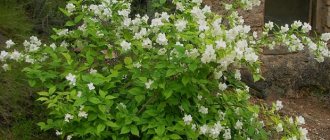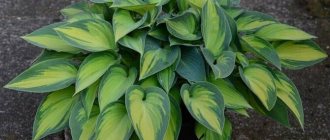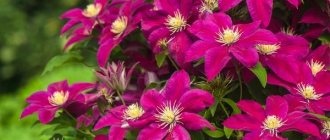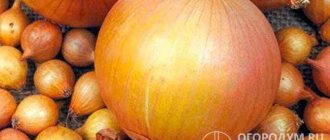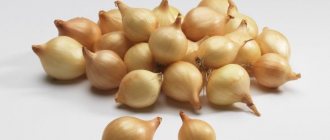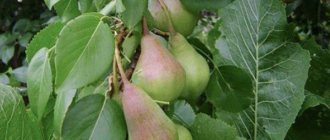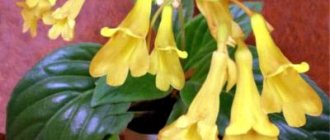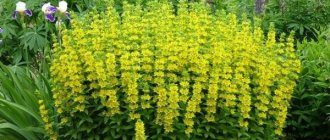Clematis is an incredibly beautiful and popular plant, but for some reason many gardeners living in the northern regions believe that nature has denied them the opportunity to grow this wonderful flower. Fortunately, this is a common misconception, and even if you live in northern Siberia, clematis can easily take root in your garden. The main thing is to choose the right variety and methods of caring for the plant. After all, it is not for nothing that breeding has developed, creating hundreds of new cold-resistant varieties every year. In this article we will look at the best winter-hardy varieties of clematis that exist and figure out how to ensure a carefree and successful existence for the shrub.
Description of the species
Clematis are representatives of the Ranunculaceae family, another name is clematis. In nature they grow in temperate latitudes of the northern hemisphere, in the subtropical zone. Distributed everywhere - along the slopes and banks of reservoirs, in steppes, and bushes.
A perennial plant with liana-like or tree-like shoots. Flowers are solitary, sometimes in inflorescences. Natural species bloom in spring. Flowers have 4-8 petals, many stamens and carpels. About 300 species are known, in Russia - 15. The princeling, which belongs to the clematis subgenus, grows throughout the Siberian region.
Features of decorative culture
When growing any plant, you must first become familiar with its characteristics and features.
The native lands of clematis are the subtropics and temperate zone of the Northern Hemisphere. Plants of the Ranunculaceae family can be herbaceous or woody, but most often gardeners grow vines with twining shoots.
Leaf climbers can be characterized by taproot or fibrous root systems. Faceted shoots, distinguished by their thinness, are formed from underground parts or above-ground points of the tree. Simple or compound leaves may be lanceolate or ovate in shape. Lianas are characterized by green foliage, but there are varieties that have equally attractive purple leaves.
Bisexual flowers can grow singly or be collected in inflorescences in the shape of a panicle, shield or semi-umbrella. Simple flowers have 4, 6 and 8 petals; double flowers can have several dozen petals. A large number of stamens and pistils form a hairy center, similar to a spider. Clematis are characterized by a variety of shades: they are white, yellow, pink, purple, blue, etc. The fluffy fruits, collected in fruit clusters, are characterized by a nut-shaped shape.
Lianas bloom for 3-4 months. Flowering of tall clematis, reaching 3-4 m in height, occurs in the upper part of the shoots. This nuance should be taken into account when choosing a place for planting and installing a support for the vine. Usually the shoots are tied so that they bend down. This arrangement of the plant allows you to beautifully decorate arches and fences. In low species, there is an almost complete combination of the vegetative and generative parts. During flowering, almost the entire tree is covered with beautiful flowers. But this feature prevents cuttings, since only the vegetative elements of the plant are used for cuttings.
Growing
The methods of planting and caring for clematis in the Siberian region differ little from the general rules of agricultural technology. The main differences are in the abundant pre-winter pruning of the bush, so that it is easier for the plants to withstand frost, and the timely covering of the flowers.
Variety selection
When selecting varieties, they are guided by frost resistance. Many clematis easily tolerate cold temperatures down to -30-40°. The decorative effect of cold-resistant varieties is high, the flowers are large, expressive, and bright. When choosing a variety, they take into account which shoots of this species the flowers develop on, because in winter in Siberia clematis is heavily pruned. According to flowering methods (types of pruning), clematis are divided into 3 groups.
First group
This group of clematis produces buds on old shoots from last year, rarely on new shoots. In the Siberian region, it is not recommended to grow such varieties, since in winter the green part of the bush is cut off, and the buds will have nowhere to grow.
Second
Clematis of the second group bloom twice:
- May-June - on last year’s branches;
- July-August - on young growth.
When growing representatives of the second group, severe pruning of the bush is impossible (shoots are shortened by 1/3-1/4 of the length and insulated with air access). The second group can only be planted in the southern part of Siberia, since poorly covered shoots freeze out in severe frosts. Siberian flower growers still plant these clematis - the most beautiful, double species belong to this group.
Third
The clematis most adapted to Siberian frosts is the third group, which blooms on vines that have grown on bushes since the beginning of spring. Flowering starts late - July-August. In this class of clematis there are many varieties with exquisitely beautiful flowers (few double ones).
Natural varieties
Some wild species have impressive decorative properties, so they are planted in areas. Straight and Tangut clematis grow well in Siberia.
Straight
The dense stems of clematis do not need staking; the plant resembles a shrub up to one and a half meters high. During the flowering period, the bush is showered with small white buds, the flowers raise their heads towards the sun. Abundant flowering - June-July. In winter, the stems are cut off at the root.
Tangut
During flowering, clematis is completely covered with medium-sized yellow bells with drooping heads. More than a hundred buds develop on the shoots. Tangut clematis produces vine-like shoots up to 4 meters or grows as a low bush. The plant is also decorated with growing fruits with a long silvery tail.
Landing
In one place, a healthy clematis bush can grow in Siberia for 5-10 years. The longevity of a flower largely depends on the convenience of location and compliance with planting conditions.
Selecting a location
Clematis do not like dark places where the sun rarely shines. When planting a bush near buildings, choose the south side, away from the roof from which water flows. The planting area should be well lit, only light shading is allowed. The greatest danger to plants is stagnation of moisture, so in lowlands where there are often puddles, as well as in places where groundwater flows high, bushes are not planted.
Choose a place protected from drafts, where excess moisture will quickly evaporate in the sun. The support for clematis is prepared in advance, before the bush has grown.
Important: clematis grows best on small hills from which water flows. Flower growers advise raising the area for the flower - making a mound 5-15 centimeters high.
Soil requirements
Clematis grow poorly in heavy acidified soils with high salinity. Having selected the soil from the pit, they make drainage - a mixture of broken bricks, vermiculite, and sand. To deoxidize, lime, dolomite flour, and wood ash are added to the soil. When planting a bush, the soil is replaced with a mixture of humus, compost and fertile soil with the addition of complex fertilizers.
See also
Description and characteristics of clematis variety Niobe, planting scheme and careRead
Planting process
Having decided on the site, they dig a hole with sides 60 centimeters and the same depth. Pour in a drainage layer (10-15 centimeters). The roots of the seedling are carefully straightened. Place young clematis so that 1-2 buds are buried 7-12 centimeters. The bush should be placed in a shallow hole, below the soil level.
Landing dates
Most experienced gardeners advise planting clematis in the spring, although, according to agricultural technology, autumn is also acceptable. It is important to choose a time when the threat of frost has passed, but the weather is still cool and comfortable enough for rooting.
When planting a flower in spring, it is better to prepare the hole in the fall.
Care
Caring care ensures long-term abundant flowering and decorative appearance of clematis. Care includes watering, garter, fertilizing. The clematis bush grows best if the roots are shaded and kept cool.
Watering
The powerful root system and fast-growing vines require a lot of moisture. Water the clematis bushes abundantly so that the water completely saturates the ground to the lower parts of the roots. Frequency: once a week. Stagnation of water should not be allowed. After the top layer has dried, the soil is loosened to avoid moisture loss and mulched with organic matter, which will serve as fertilizer for the flower.
Help: an obligatory part of care is the removal of weeds, which contribute to the spread of diseases and pests dangerous to clematis, and do not allow excess moisture to escape.
Trimming
During the summer, it is necessary to prune dry or diseased areas of the bush, and also, if desired, carry out decorative formation of the plant. In autumn, with the approach of frost, the branches are cut off, leaving 15-20 centimeters of the stem with 3-4 buds. It is important not to delay pruning the bush until the onset of severe cold weather.
Construction of a support
Gartering a clematis bush and fixing the shoots to a support help solve the following problems:
- fix the flower in a vertical position;
- ventilate the bush, protect it from excess moisture and fungal diseases;
- make it easier to care for and trim.
The support performs a decorative function; gardeners approach the construction of supports creatively, because in the absence of greenery, the structure should not spoil the appearance of the site.
Rolled mesh
Large mesh cells are used to tie clematis shoots planted along the support. Attach the net to strong bars.
Mesh arches
An arched support for the mesh can be installed on the site, creating a recreation area. Clematis vines will gradually entwine the arch, creating a natural canopy from the sun.
Obelisks
Supports in the form of obelisks made of wood and metal rods firmly hold the clematis and prevent the bush from falling apart.
Trellis made of picket fences
The remains of the fence picket can be turned into a support for bushes (height of at least 1.5 meters).
Mesh on the arch
Arched structures decorate the site. Having made several symmetrical arches, stretch the mesh and fasten the shoots.
Pipe in the center of a bicycle wheel
A cylindrical support for a bush is constructed from a strong pipe in the center and a bicycle wheel mounted on top.
Wooden grates
You will need a strong frame and a grid in the form of diamonds or squares measuring 5x5 centimeters. The wood is painted or varnished.
Round support
The spherical support looks great in flower beds, near terraces. They are made from flexible pipes made of aluminum or plastic; wooden rods serve as additional support for the clematis.
Wooden pergola
A stable, durable and strong wooden pergola can be built from beams and thin slats.
Mesh post
The role of the column is performed by a pipe or fittings. A round or square frame is made on top and a mesh is secured. Clematis are planted inside or along the perimeter.
Pyramids
Clematis planted in different places on the site can be strengthened on stable pyramids made from slats or pipes.
Semicircle
Semicircular fasteners for clematis bushes are bent from elastic pipes or fittings. It is buried and concreted so that it does not collapse.
Corners on the fence
By strengthening special corners for clematis on the fence, you can create a natural flowering barrier around the area.
Information: decorative fences are also used as supports for flowers, structures in the form of trellises, figurines made from reinforcement, clematis are attached to the walls of country houses.
Fertilizer and feeding
Only well-fertilized clematis bloom magnificently and abundantly. In the spring, the soil in Siberia under clematis bushes should be deoxidized by adding dolomite flour and lime. During the season, several feedings are carried out:
- nitrogen fertilizers - in the early stages of the growing season;
- potassium - during the flowering period;
- phosphorus - in the fall.
It is better to use fertilizers containing microelements - boron, molybdenum, cobalt. Ready-made complexes of prolonged action (Pokon, Kemira) are applied in the interval between main feedings.
Shelter for the winter
Even frost-resistant clematis varieties provide shelter as cold weather approaches. Used for winter insulation:
- peat;
- sawdust;
- spruce branches;
- roofing felt sheets or light wooden panels.
The clematis are covered with fallen snow on top of the shelter. With the onset of warmth, the bush is freed, the soil is thoroughly loosened.
Planting clematis - how to do it right
In Siberian conditions, it is best to plant clematis in the spring, then the plants will go to winter with a stronger root system.
Clematis seedlings purchased from nurseries are planted in a permanent place in compliance with certain requirements:
- The planting site should be chosen as sunny as possible, protected from the wind.
- Plant pits measuring 0.6 x 0.6 m must be prepared in advance, filled with fresh nutritious soil. When filling planting holes with soil, it is not recommended to add peat and organic fertilizers.
- If the groundwater level is high in the area, it is necessary to provide reliable drainage to the clematis bushes.
Clematis seedlings
- The plant does not tolerate wet, heavy soil, with a high level of salinity and acidic reaction. A layer of drainage materials is laid at the bottom of the planting hole, quartz sand, perlite, and vermiculite are added. The soil removed from the pit should be mixed with humus, with the addition of lime and dolomite flour.
- For better flowering, granular superphosphate is added to the soil mixture - this will help the vine to flower for a long time. Ideally, it is necessary to prepare the soil and planting hole in the fall, this is required to neutralize the lime.
After preparing the site, they proceed directly to planting the plants. The planting material is carefully removed from the container. You should carefully examine the clematis roots and remove any rotten ones. The plant is placed in a hole, the roots are straightened. Thin shoots of clematis should be immediately secured to a support, so the seedling will feel more comfortable in windy weather. The roots of the plant are covered with soil mixture, and the soil is compacted.
Scheme: rules for planting clematis
Clematis plantings should not be placed close to the walls of buildings; it is necessary to leave a distance:
- from walls or fences - up to 20 cm;
- the distance from the wall to the support is 30 cm.
Excessive water causes great harm to clematis. When planting, avoid places where water accumulates.
Advice! When planting clematis, bushes should not be placed near roof drainage systems.
Suitable varieties
Many varieties that are frost-resistant and highly decorative are successfully grown in Siberia.
Elegy
Purple beauties with a flower size of up to 13 centimeters. Shoots grow up to 3.5 meters. It has been cultivated in Siberia for many years.
Luther Burbank
The Luther Burbank variety is not afraid of frost and blooms throughout the summer months. The flowers are purple-violet with yellow anthers (16-20 centimeters).
Anastasia Anisimova
A strong bush (1-1.5 meters) does not need support, it is strewn with blue flowers with delicate veins.
The president
A star-shaped flower with wavy petals. Flowering - twice a season, the color of the flowers can change from dark to light purple.
Multi Blue
Lush double flowers with colors ranging from purple to blue and up to 20 centimeters in size. In the absence of early frosts, the bush may bloom again in the fall.
Miss Bateman
White and delicate, like the English Miss, the flowers grow up to 15-17 centimeters. Grown in Siberia due to its unpretentiousness and resistance to adverse conditions.
Cholmondeley
Clematis of this variety produces flowers in shades from lilac to purple. On old shoots they are semi-double, on young shoots they are simple.
Madame le Cultre
The bush with lily-white flowers can withstand frosts down to -35° in winter.
Warsaw Nike
The petals are dark purple in the center and lighter towards the edges and do not fade in the sun. They bloom twice.
Dr. Ruppel
Exquisitely shaped and colored flowers with lush anthers. The petals are soft pink with a brighter stripe in the center.
See also
Description of clematis variety Manchurian, agricultural cultivation technologyRead
Nellie Moser
Star-shaped flowers with 6-8 petals with pointed tips. The color of the petals is light pink with a bright purple stripe in the center.
Jacquemin
4-6 clematis petals are dark purple with a tendency to discolor to a bluish tint.
Rouge Cardinal
Velvety bright purple or burgundy flowers will decorate any area. Blooms abundantly, June-August.
Huldin
A late variety with large white flowers with a pearly sheen.
Hegley Hybrid
An English miracle with heads up to 18 centimeters. Petals are pink-lilac, anthers are burgundy-lilac.
John Paul 2
Clematis blooms with snow-white buds with a soft pink indistinct stripe in the center of the petal.
Ernest Markham
Variety 1936. It is famous for its flowers in bright shades of red - from pink-lilac to red-burgundy.
Purpurea Plena Elegance
Small flowers cover the bush with a purple-violet blanket.
Minister
The bluish-lavender petals have a pink-purple stripe in the center.
Space melody
The flowers are strongly open, cherry shades with velvety petals. Flowering is abundant and long lasting.
Ville de Lyon
Pink-red flowers with a pronounced border along the edge.
Forest Opera
The white petals almost close together, forming a circle. Blooms until frost.
Dawn
A rare variety with snow-white flowers, which are pale pink at the beginning of blooming.
Climber
Clematis of the Alpinist variety has light lilac petals of an elongated diamond shape.
Ballerina
With their whiteness and shape, the open flowers resemble a ballet tutu. Blooms again in August.
Flower Ball
The round-shaped petals of clematis are painted in a pale purple color, with a brighter stripe in the center.
Golden Jubilee
The pointed violet-purple petals of clematis gradually lighten in the sun.
Blue flame
One of the most reliable varieties for Siberia with purple petals.
Lilac star
Pinkish-purple flowers do not fade in the sun, blooming from June to August.
Gray bird
The purple-blue petals are slightly curved downwards and spread out, giving the flowers the appearance of a bird.
Nikolay Rubtsov
Abundant flowering along the entire height of the bush with pink-lilac buds.
Texa
Buds with complex petal colors - a blue background with stripes and strokes of pink and white shades.
Blue Angel
Clematis blooms in a lush cloud of soft blue flowers.
Koduehe
Delicate lilac color of the petals with a darker stripe in the center.
Lituanica
A variety bred by Lithuanian breeders with red anthers and wavy white-pink petals.
Niobe
A highly decorative flower of a bright purple color with short yellow anthers.
Gypsy Queen
Purple flowers can fade in the sun; choose a shaded area for planting.
Victoria
Delicate clematis with a purple-pink color and a yellow core were bred in Estonia.
Clematis - lover of fertilizers
Abundantly flowering clematis vines spend a lot of energy on flowering and constantly need feeding. It has been noticed that the plant consumes quite a large amount of fertilizer per season.
To deoxidize the soil under the bushes in the spring, it is useful to add dolomite flour, chalk or lime.
For abundant flowering, clematis needs fertilizing.
To feed plants, you can use an infusion of green grass, universal fertilizers and long-acting formulations. The Kemira fertilizer has proven itself to be excellent. A more expensive preparation for feeding clematis is Pokon.
The plant needs microelements, especially boron, molybdenum and cobalt, which are applied in the form of root or foliar feeding.
Reproduction
Owners of clematis use several methods of propagating mother plants. The methods do not require special knowledge, are not labor-intensive, and it is possible to obtain viable clematis that completely replicate the properties of the variety.
Stem layering
The simplest and most effective way to quickly get the desired number of new clematis bushes is by digging in drooping stems. Several small cuts are made on the shoot, the stem is pinned to the soil with a pin and sprinkled with soil. The procedure is carried out in June-July so that the cuttings take root before winter.
In winter, the shoots are covered; in spring, the bushes are transplanted to a new location. This method gives good results on fertile, well-fertilized soils.
Green layering
Sections of stems (green or woody) are cut off from vegetative bushes and placed in a mixture of sand and peat in small containers. Layers are taken in May-June and kept in greenhouses with a temperature of 18-22 °. Water every other day, avoiding stagnation of water in the containers.
Dividing an adult bush
Dividing a bush is an unpredictable process and is rarely used. There is a risk of losing all planting material. The bush is dug up at the age of 3-5 years, the rhizome is divided into 2-3 parts depending on the size.
What clematis like for lush flowering: tricks of experienced gardeners.
To grow beautiful clematis, you need to be aware that they are real gluttons, they should not be fed, but fed regularly and plentifully!
When to feed clematis. Fertilize the vine once every 10 days with small portions of fertilizer, always in liquid form. We begin fertilizing in May, when shoots begin to grow. What to feed:
- 1 tbsp. spoon of ammonium nitrate per 10 liters of water or
- cow manure in a ratio of 1:10, or
- bird droppings in a ratio of 1:15 or
- 2 tablespoons of vermicompost per 10 liters of water. We use one bucket of solution per bush.
How to fertilize. Alternate mineral fertilizers with organic ones. When the buds appear, give organic and mineral fertilizers at the same time. We protect from pests. If the soil is acidic, to prevent clematis wilting disease (wilta), you need to deacidify it with lime milk (200 g of lime per 10 liters of water). Ash is also suitable for these purposes. Strengthening clematis. These garden vines love growth stimulants - so spray them with Epin extra once every 10 days. This protects clematis from stress, helps them successfully survive spring frosts and makes shoot growth more active.
Protection from pests and diseases
Cold rainy weather, poor ventilation of the bushes, and an incorrectly chosen site provoke the development of fungal diseases in clematis. Pests attack bushes in the presence of weeds, dense plantings and lack of treatment.
Wilt
A fungal disease leads to drying out of vines, curling of leaves, and death of stems. In the spring, before the bush begins to grow, the soil is preventively shed with Bordeaux mixture and fungicidal preparations. Infected areas of bushes are cut out and burned. The bush is treated with Fundazol, a solution of potassium permanganate, and copper sulfate.
Nematodes
There are several types of nematodes that are equally dangerous for clematis. They attack roots, stems, and flowers. To destroy nematodes, the drugs Nematofagin and Dimethoate are used. If the damage is severe, the bush will have to be dug up and destroyed, and the area will not be used for clematis for 3-5 years.
Spider mite
Ticks are especially dangerous in hot, dry weather; clematis are regularly inspected for cobwebs and insects. To fight, use Actellik, Akarin or more gentle means - Fitoverm, Bitoxibacillin.
Aphid
Small aphids gather in numerous colonies on growing shoots and are carried by ants. To combat, folk remedies (soap, garlic, wormwood, onion peel) and mechanical removal are used. If the bush is heavily infested, use insecticides - Aktara, Iskra.
Methods for treating diseased clematis
A dangerous disease of clematis is wilt. The disease develops rapidly - healthy leaves curl, wither, turn black and fall off. A diseased plant looks deplorable - this can be seen in the photo. The disease is caused by pathogenic fungi. To prevent infection, spring treatment of bushes with Bordeaux mixture and then with foundationazole is required. It is useful to repeat this treatment in the fall, when covering plants.
Wilt - clematis disease
Infection with nematodes, spider mites and beet aphids poses a danger to plants. You can get rid of mites and aphids using systemic medications, which should be used to treat infected plants immediately.
Root or root-knot nematodes cannot be treated. Plants are dug up and burned. Clematis are no longer planted in this place.
Use in landscape design
Fast-growing clematis with abundant, long-lasting flowering are used in landscape design in various ways:
- In combination with other plants. The bushes look harmonious and grow together, without interfering with each other, with coniferous trees and roses. Clematis is complemented by other vine-like species - honeysuckle, hops, virgin grapes, lemongrass.
- Clematis of different varieties are planted to create a “blooming wave” - representatives of different species gradually bloom. The site is decorated with blooming clematis all season long.
- As a ground cover plant in rocky and gravel gardens.
- For decorating buildings, gazebos, pillars, and dried trees with flowers.
- In containers for decorating verandas and recreation areas with the ability to replace and move flowers if necessary.
- For single planting, using decorative supports. The fantasy of flower growers is endless - umbrellas, trellises, arches, obelisks.
Often 2-3 types of clematis are combined in the overall composition. When combined, some flowers dominate in size and beauty, while others are smaller and act as a background.
Clematis require regular care and attention; they need to be watered, fertilized, tied up, and a bush formed so that the shoots are placed harmoniously and do not interfere with each other. In response, blooming clematis will add unique beauty to the area, blooming a sea of flowers that are pleasing to the eye and uplifting the mood.
